Galinsoga parviflora, also known as guascas, is a great wild edible plant related to sunflowers rich in delicious history and tradition that you should know.
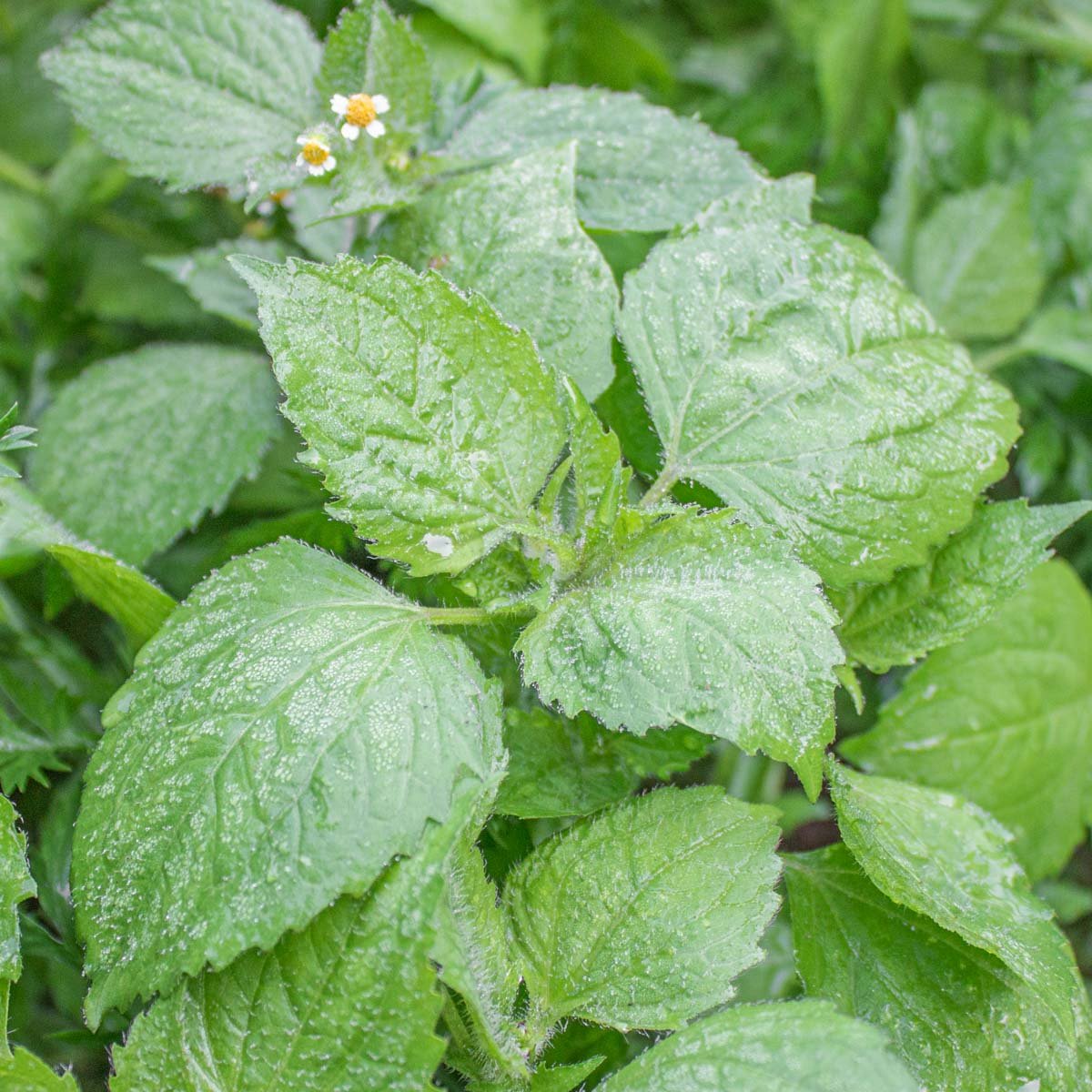
Most non-foragers will describe a lot of the plants I eat as "weeds". Sometimes, as in the case of nettles, I kind of resent that, but with this plant it's undeniably true. Along with Japanese knotweed, galinsoga is one of the most invasive and disruptive plants I've ever seen and the images of the plant completely taking over the large gardens on the farm I live on should be proof of that. Other names for the plant include quickweed, gallant soldier (my least favorite).
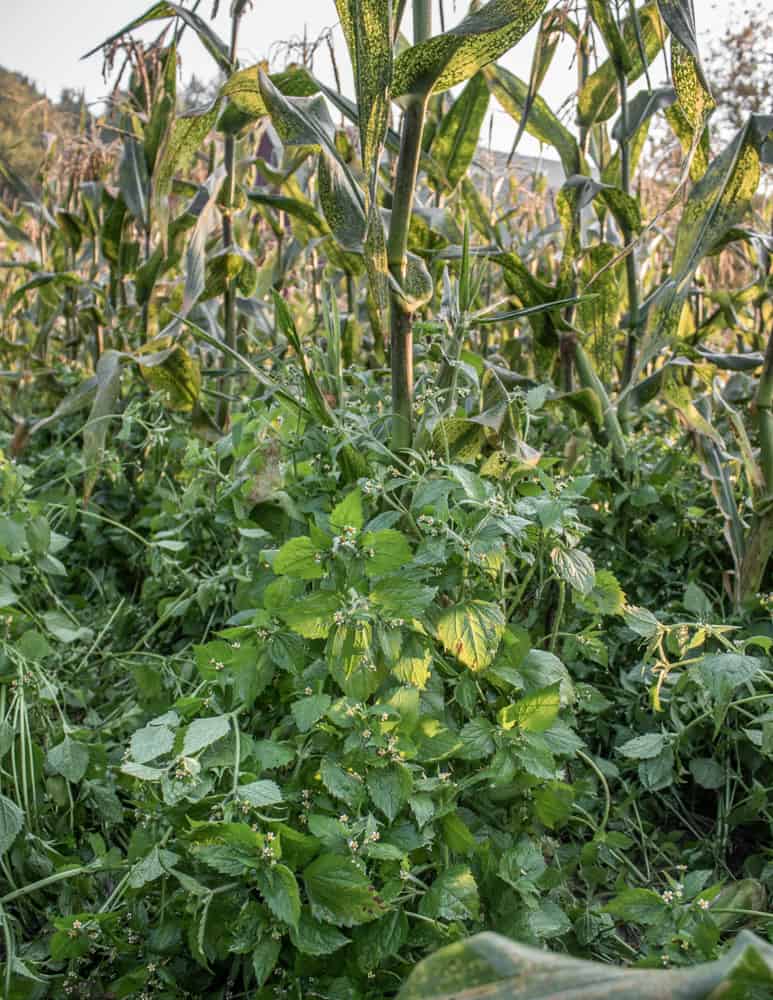
Thankfully the plant tastes good, has a mild flavor, and is easy to identify, but, before I tell you all I know about it, you should be warned: do not plant galinsoga in the bare ground where it can spread. If you must grow some, put it in a pot where it cannot spread easily, and if you see the plant spreading, remove it quickly.
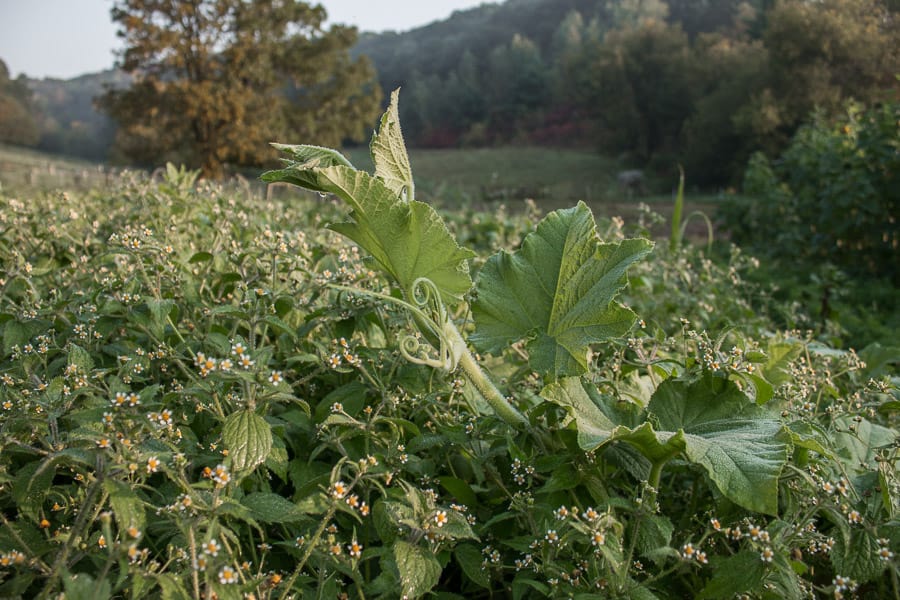
Controlling the spread
This is not easy. As I mentioned, this is a very invasive plant that can completely overtake gardens, drowning out anything (even plants as tall as corn). If you have an infestation and want to try and control the spread (without using RoundUp or other chemicals) here's what I would do, which is similar to how to try and control garlic mustard. For what it's worth, gardens that get tilled seem to have the problem exacerbated.
Remove the plants by the root (not cutting or mowing) before they make flowers. If they make flowers, they've probably already started to drop seeds and your efforts will be in vain. As more plants continue to grow, continue to remove them before they make flowers. Do not put the plants you remove in the compost. Similar to garlic mustard, we put the plants in black garbage bags and leave them in the sun to cook and die. From there, we bring them to the landfill for disposal.
Depending on the size of your garden (the gardens in the post are multiple acres in size) you may need to get some friends to help, and you will need to continually monitor the garden each year and repeat the process to root out leftover seeds from previous years.
Habitat
I most often see galinsoga growing as a garden weed, but occasionally in disturbed areas like yards where it seems to be less aggressive. The plant absolutely loves disturbed ground, and once it gets a foot hold, it will come back year after year.
The plant is fascinating in that it can grow through multiple generations in a single year, which means multiple rounds of seeds being produced, which means a lot of greens, whether you like it or not.
Look a likes
First, I do not know any dangerous look a likes for this plant. The only real look a like I know of to this plant is Canadian Clearweed (Pilea pumila). The good news is that Canadian clearweed is a relative of stinging nettles, and is also edible, unfortunately it's not worth eating in my opinion.
Harvesting
Like most wild plants, there's a perfect window for harvesting for the best flavor and texture: young. With galinsoga, that means before the flower stalks have started to form.
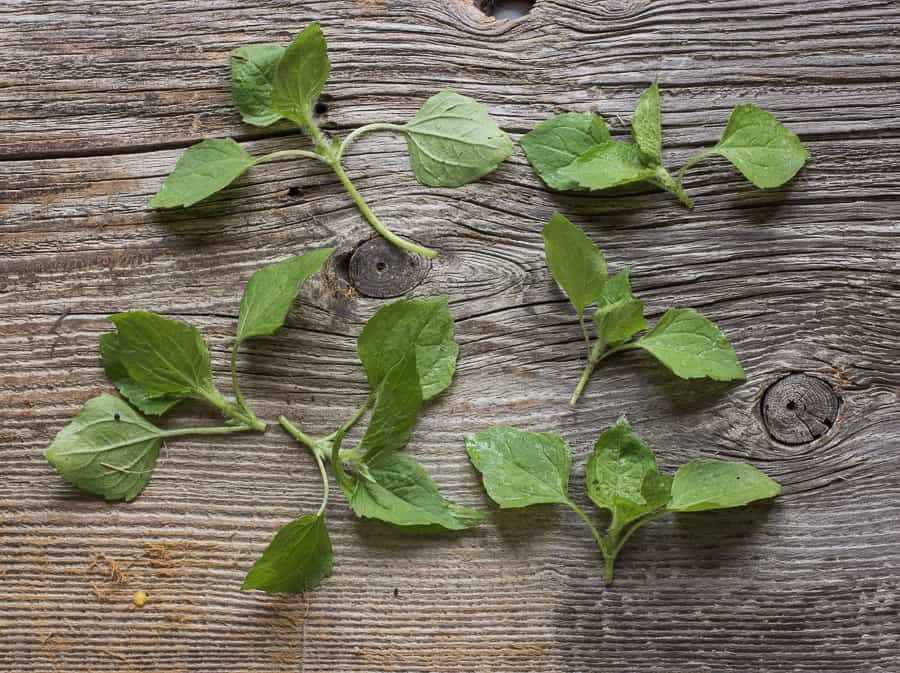
If you come across a patch of plants past their prime though, you can absolutely harvest them and dry to make your own dried guascas, since the flowers and tough stems will be sifted out and not used in the finished dishes you'll make with it.
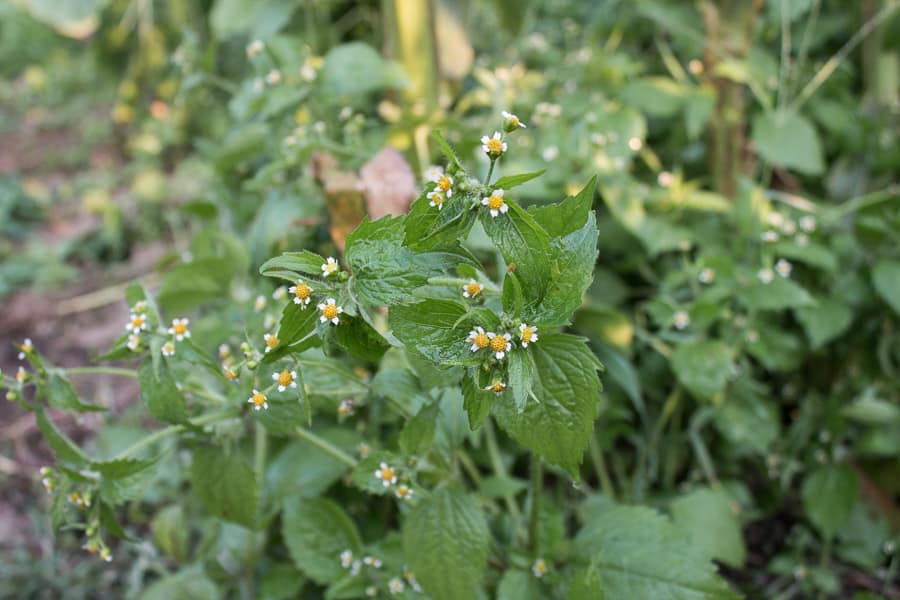
Cooking
Galinsoga can be cooked like any other leafy green, although it will have a bit more texture. Small amounts of young plants can be added to raw salads in small amounts, in combination with other greens.
Raw vs Cooked
I don't recommend making salads of all guascas since the leaves can taste a little furry in your mouth. The slightly furry texture is removed by cooking, so I typically eat them as a leafy green.
What's it taste like?
The plants are related to sunflowers, as are dandelions, sow thistle, and other plants in the Asteraceae, so, in short, it tastes reminiscent of sunflowers, but most people won't notice a defining flavor cooked as a leafy green.
Cooked as a leafy green, galinsoga is mild tasting and pleasant, without a hint of bitter or strong flavors some of its relatives have. After drying, it takes on a stronger flavor that's best used to flavor soup like the Ajiaco Bogotano I describe below.
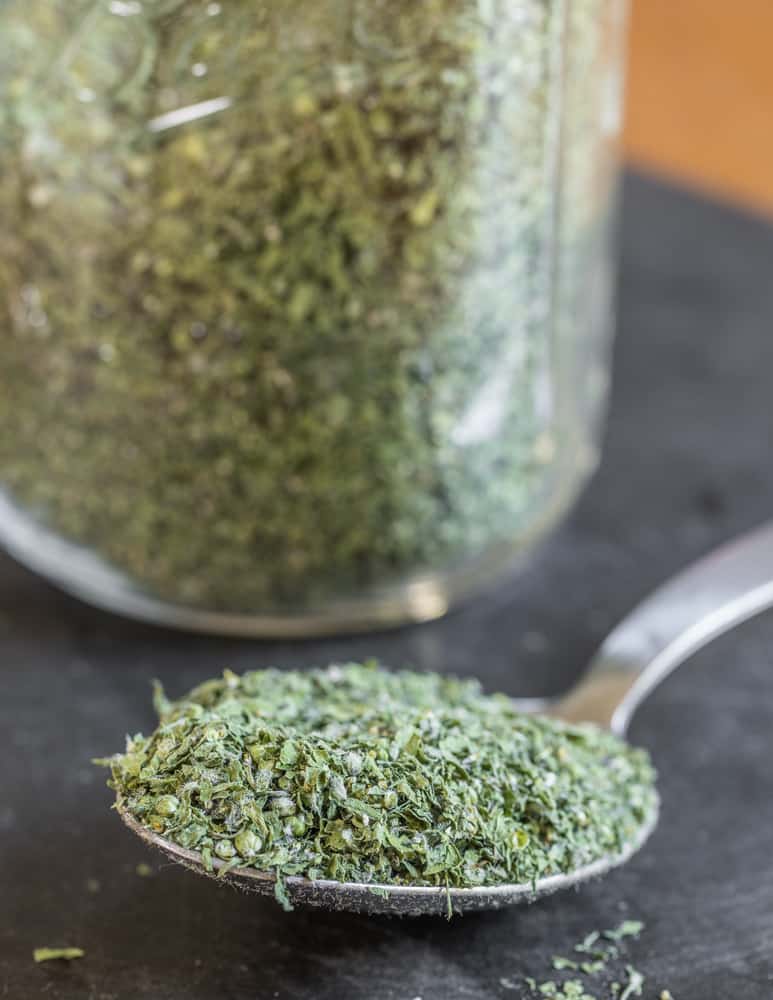
In Colombian Food
Without a doubt, I think the most important thing (besides being careful of where you plant it) about galinsoga is its cultural culinary significance in Colombia. In Colombia, the plant is known as Guascas, and if you look online, you'll see that it's sold dried as an herb.
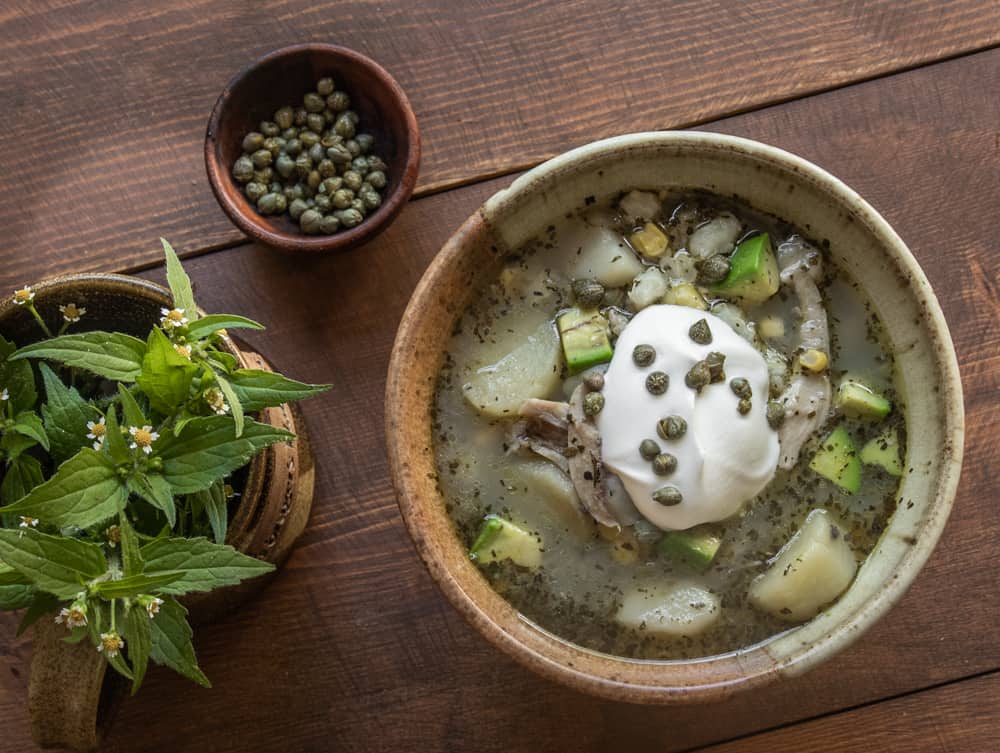
Traditionally, it is used in the national dish of Colombia: Ajiaco Bogotano, a sort of Andean stew made with different varieties of potatoes, corn and chicken, garnished with capers and sour cream. A few years ago I made a 25 gallon batch of it to serve 200 people, and it got rave reviews. If you can find some of the dried herb, it should be the first thing you make as it's the best galinsoga recipe I've had.
Dehydrating
Making your own dried guascas is easy, and, depending on where you live, you may not even need a dehydrator, although I recommend using one for ease and consistency.
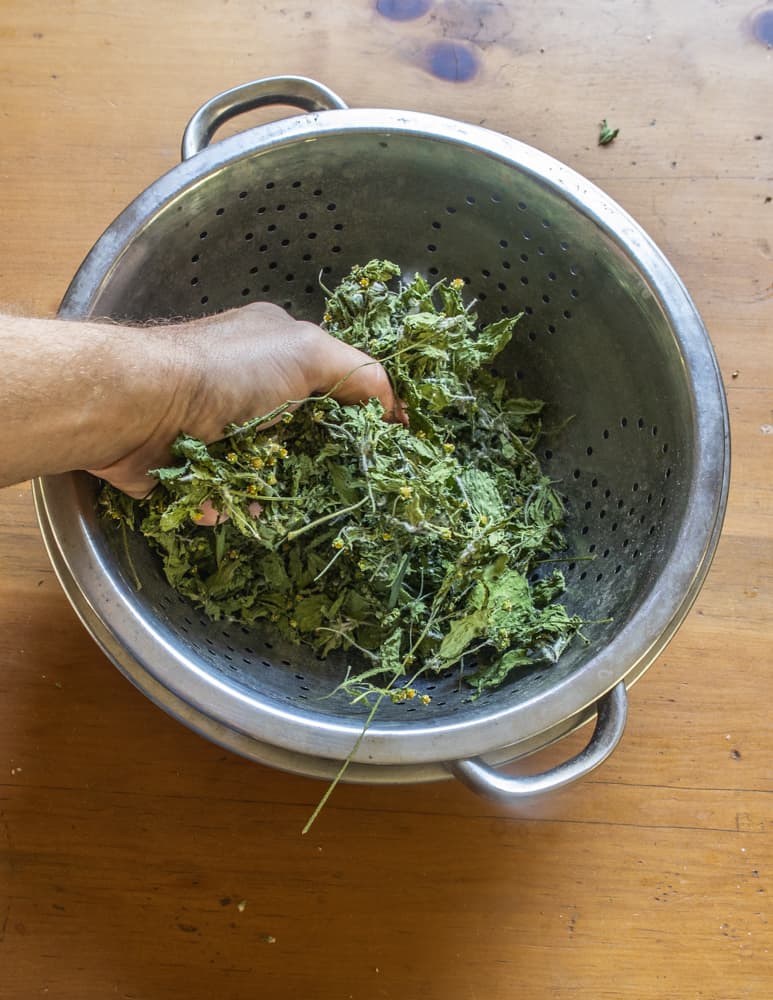
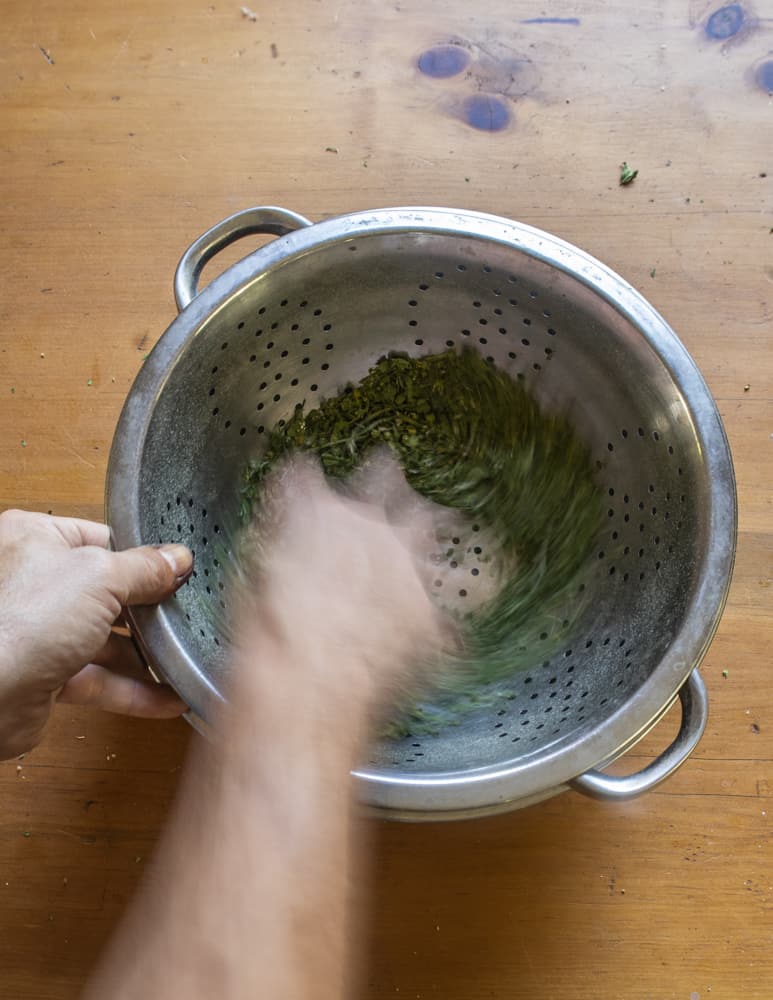
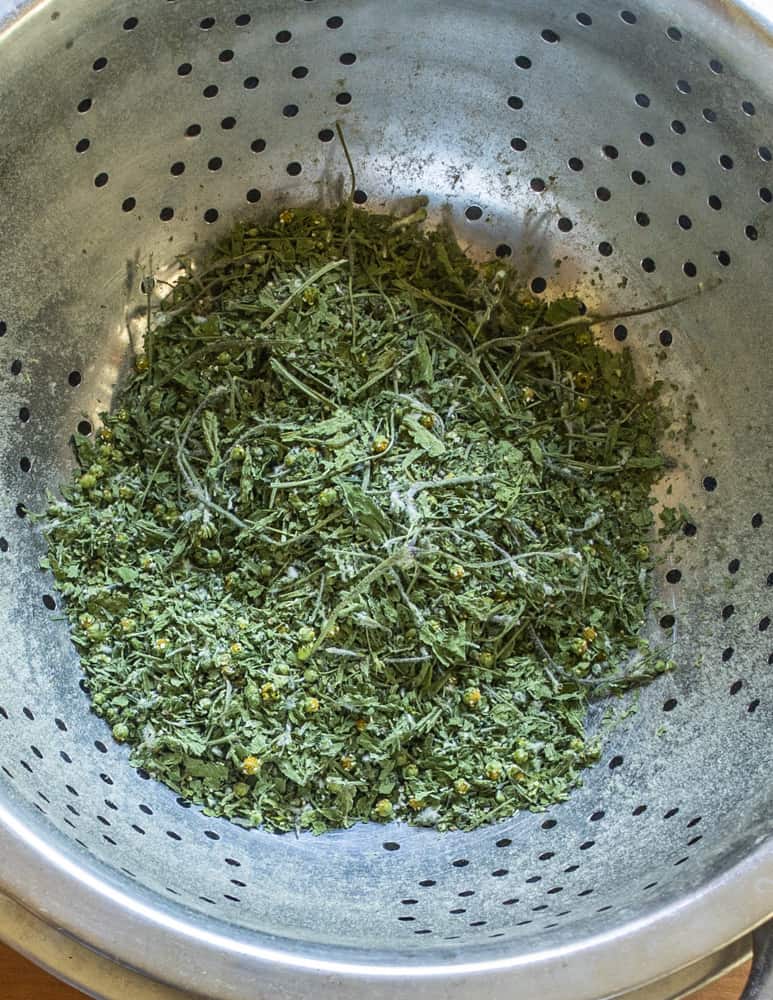

To make your own dried guascas, harvest the plants, and put them in a dehydrator at 145 F (or the high setting) overnight, or until bone-dry and easily crumbled. If you don't have a dehydrator, you can leave the plants out in a sunny place spread out on a tray, or you could tie groups of plants together by their stems and hang them to dry in a place where they wont get wet. Aiming a gentle fan at the plants while they dry will speed up the drying process.
When the plants are bone-dry, put a colander in a larger bowl, then crumble the dried leaves and stems into the colander. Crush the plants with your hands, moving them around in a circular motion to help the smaller particles fall through the holes of the colander.
When most of the small crumbled leaves have fallen through the holes, discard the stems left in the colander and repeat the process. Jars of dried guascas can be stored in a jar at room temperature like any other herb.

Rich
The deer love it in my garden. I also pull the weed roots and. Put them in a five gallon bucket and dump them in the neighbors chicken coop. The chickens love it I have dumped eight buckets in their coop in the last three days and they eat it all up in a day.
Alan Bergo
Thanks Rich. I can confirm chickens love it.
heidi
Is Galinsoga the same thing as 'chickweed'? It looks like what grows here in NC>
Alan Bergo
No, chickweed is Stellaria genus.
Maria Del Pilar Ospina Castro
Hi, I need to buy Galinsonga parviflora seeds can you tell me can buy them here in the UK.
Thanks.
Pilar Ospina.
Alan Bergo
Sorry, I don't know where you could buy them in the U.K. Keep in mind the plant is very invasive.
Helen
Where in uk are you? It’s a common pavement weed in London so can send you a few plants if you like
Kathryn
I named it Devil weed before I knew what it was. I use it in smoothies, salads and most dishes. I freeze it for winter smoothies and would only give an enemy the seeds. Just this morning I was laying fabric from plant to plant in my veggie garden to limit the weeding. You could weed all day, all summer and never get rid of it. I say if you can't beat it eat it!
Becky
I would like to know what it tastes like. My daughter has a friend from Bogota and I want to fix Ajiaco for him. Is there an herb that is close to the flavor? Lemon balm?
Alan Bergo
Parsley.
Steve Crozier
A cross between oregano and marijuana. Seriously. In a good way. A bit of earthiness and a hint of smokiness.
Ed Walter
I’m looking to plant some in containers, cannot find any. Any chance someone could send me some that has gone to seed? Put it in a gallon ziplock and mail it. I’d pay for postage and your time.
Ed Walter
Alan Bergo
Hi Ed. Just FYI, you don't want to leave your phone number on websites, even secure ones like mine. The internet can be a weird place. Unfortunately I don't have any galinsoga seeds.
Kathyrn
Don't plant it you'll be so sorry. I have this weed it has been my mortal garden enemy for years. I was excited when I found out it was edible and yes I put it in everything and have tried freezing for winter smoothies. I have 2 gardens and because of this plant I only use one as we till till till and put down tons of preen on the unused garden and yet that garden is still a very gallant soldier.
Alan Bergo
Good advice, I wouldn't plant it either, but it's nice to eat after you weed.
Kim
The more you till, and in so doing disturb the soil, the more it will grow. It likes disturbance. Perhaps some no-till gardening will slow it down. It has disappeared from my old garden plot where I don't till. My neighbour has her garden tilled ever year, and it grows like crazy there. Plenty for me to forage.
Alan Bergo
Oh god are you right. It has taken over great swaths of garden at the farm I live on part time.
Ross
Hello. Could someone advise how to plant it, when and what seeds to buy? I am in uk. Thanks
Alan Bergo
I don't recommend planting this one.
Lee Stevenson
I love the taste of Galinsoga but so do the deer, they wipe mine out. At least it keeps them away from my other plants.
multikulinaria
So far I found Franzosenkraut (German for frenchweed) only once. I wish I had an abundant spot as the one in your picture, to get Franzosenkraut from. I had to do with a handfull of plants ... and I very much liked the taste of the raw plant.
Alan Bergo
Hi Peggy, thanks for sharing, I really find it interesting how many people and traditions around the world have been using this plant. Are there any traditional German ways of using the franzosenkraut that you like? Just raw in a salad?
Heidi Arena
In Columbia it is called “guascas” and it is a key ingredient to make a chicken, potato and corn soup called "ajiaco". I think it has an interesting and unusual flavor when cooked. I would love to have some more recipes that feature its concentrated cooked flavor as it is so abundant.
Steve Crozier
I made some ajiaco Bogotano yesterday, with dried guascas: so very delicious! The guascas is subtle (though you use a lot: a half cup of dried in a batch that made about a gallon), but distinctive, and really makes this a great soup/stew. The garnishes of corn, avocado, and capers (!) is key, too.
Lenny Russo
I know this plant as "potato weed". The name is likely derived from the shape of the leaves and the similarity of the flowers to the flowers of certain potato varieties.
Alan Bergo
Another name I haven't heard of for it. Fascinating how many common names there are for things and how they come about.
Matt Normansell
Yeah it's a weird one. I believe iit'srs a slightly different species than in the UK but gallant soldier is also the common name for that one, same taste in my experience but nobody else in the UK seems to use it. Was pleased to see more people this side of the pond utilising it. It may be because it seems more virulent and abundant here, whereas its only a minor arable weed in the UK
Alan Bergo
Yes, virulent is definitely a term I would use.
Nick
I've been looking for this plant for quite some time now. I live in Sevenoaks (Kent) and have never seen it. Also lived in London before and never saw it anywhere. After reading all the comments I would definitely not plant it in my garden, however would love to have some to prepare south american food. Can someone please tell me if there is any near my area? Thanks!
Alan Bergo
Hey Nick. I'd just order it online and save yourself a bunch of hassle.
Nick
I would!
Unfortunately I can't find anyone selling seeds or plants.
Deborah???? Porter
Wow! What a performer! I’m going to try it in a sheet mulched patch away from the fenced garden. I wonder if the deer will like it...
Alan Bergo
Couldn't speak to the deer consumption, but, yeah I definitely got a lot out of a small patch of the stuff, it is very aggressive.
Deborah???? Porter
All the more reason to try it up
here in BC... could make for even more delicios venison! Share and share alike!
Lauri G.
I'd be careful about planting it. It's aggressive because the seeds are prolific and mature quickly. The plant is capable of growing several generations a year. Once your soil has those seeds in it, you'll never get rid of it. On a positive note though it's very easy to pull out!
Deborah???? Porter
Thank you for that caution. The spot that I’m thinking of is a clearing away from my lavender fields and veggie garden, and ringed by second-growth cedar and alder ... I was looking for something to go with the nettles, melissa and other herbs that I use but don’t necessarily want in my veggie patch. Again, thanks!
Lea M.
I am wondering about quick weed or gallant soldier as deer forage as well in B.C. I am thinking about transplanting to my large acreage but don't want my neighboring ranchers to be negatively impacted. I much prefer deer to beef.
Alan Bergo
I wouldn't plant it. Once it gets a foot hold it can be incredibly invasive.